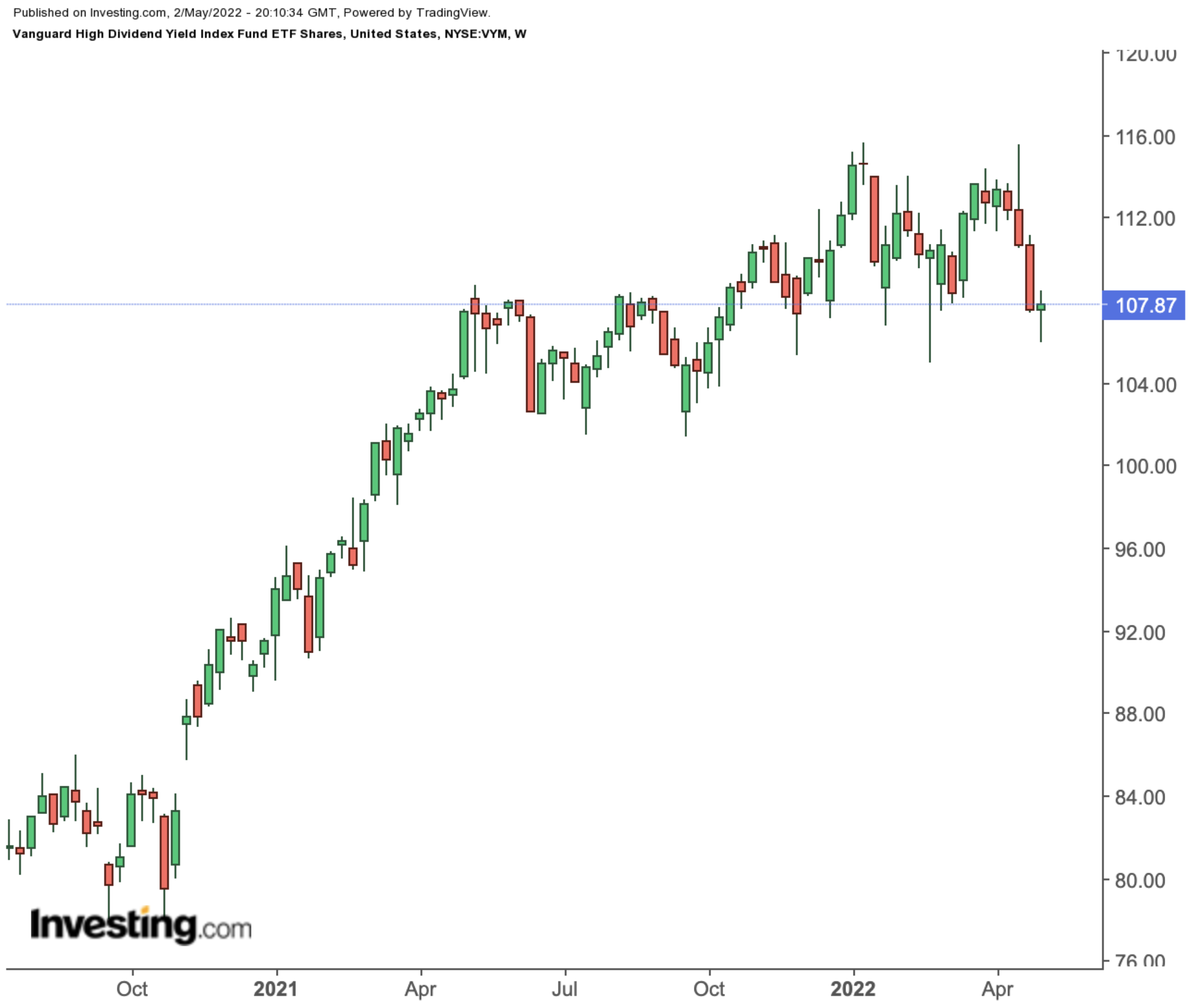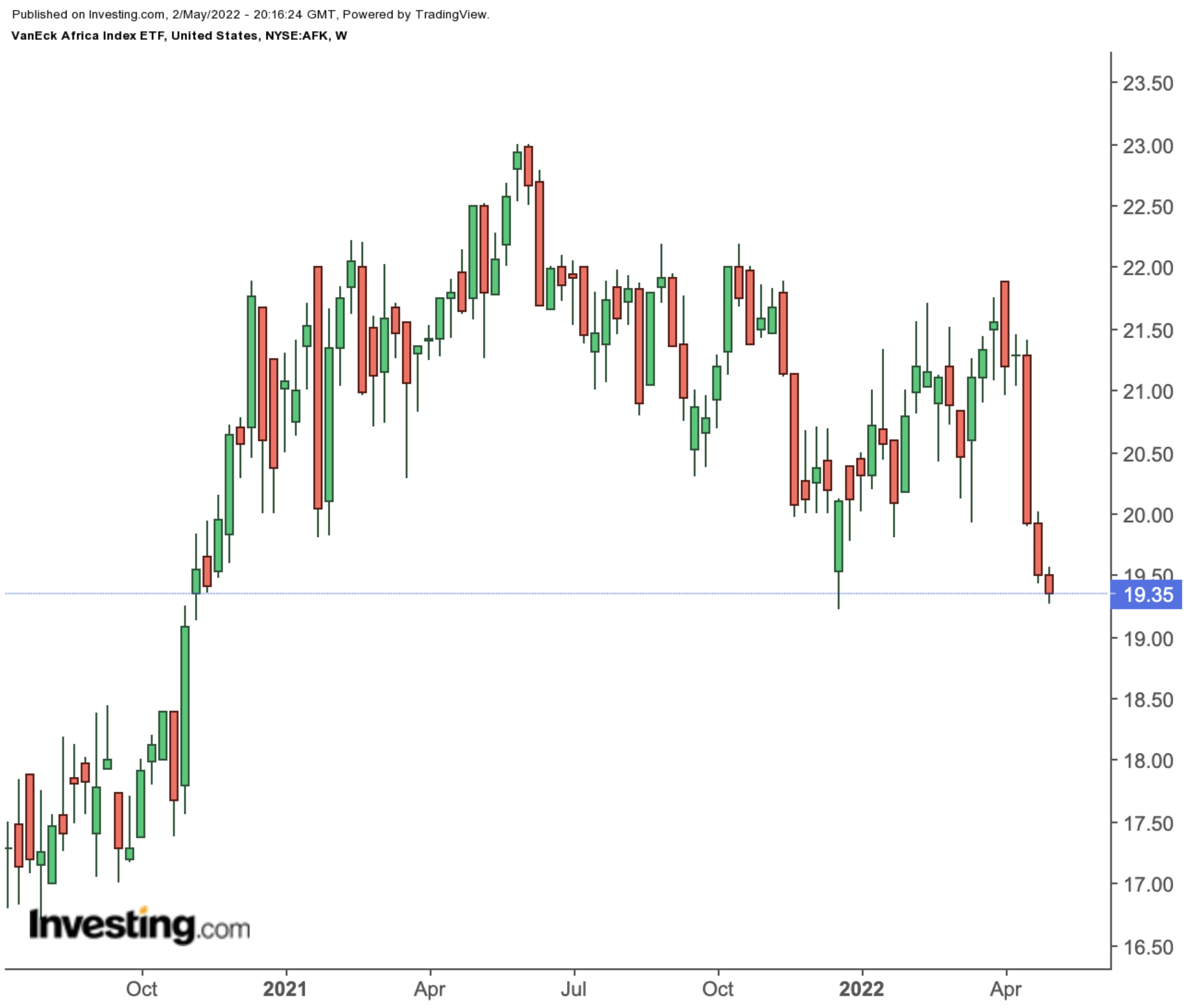The year-to-date broad market sell-off gathered pace in April, as US indexes recorded their worst monthly performance since the pandemic-driven crash of March 2020.
The NASDAQ underperformed and posted its worst performance since October 2008. As we recently discussed, many stocks and exchange-traded funds (ETFs) that were the darlings of the pandemic saw particularly significant declines.
Many of our readers know that a bear market is typically defined by stock prices falling 20% or more from their recent highs. Morgan Stanley recently warned about the possibility of such an environment, suggesting that investors should sell into potential rallies.
Meanwhile, research by Merrill suggests:
“…there have been more than 14 bear markets in the S&P 500 since 1926 and they’ve tended to last an average of less than one year, compared with the multi-year span of a typical bull market…”
It is not easy to pinpoint exactly when a bear market starts or ends. However, financial planners suggest that retail investors should not time the market but stay invested for years, if not decades. After all, market history shows that, on average, stocks lose 36% in a bear market and gain 114% during a bull market.
Thus, diversification could be the key to protecting your investment portfolios. Here are two ETFs that may appeal to readers who believe the aged bull market is ending and, instead, a bear market is upon us.
1. Vanguard High Dividend Yield Index Fund ETF Shares
- Current Price: $107.89
- 52-week range: $101.37 - $115.66
- Dividend yield: 2.88%
- Expense ratio: 0.06% per year
Our first fund is the Vanguard High Dividend Yield Index Fund ETF Shares (NYSE:VYM). It invests in US companies with a long history of paying larger-than-average dividends. The fund was first listed in November 2006, and its net assets are close to $58 billion.

VYM, which tracks the returns of the FTSE High Dividend Yield Index, holds 445 stocks. More than a fifth of the fund is in financials. Then come healthcare stocks (13.90%), followed by consumer staples (12.40%), industrials (10.20%), energy (8.80%), consumer discretionary (8.80%), utilities (7.10%), and others.
Over 22% of the portfolio is in the leading 10 companies. Among them are well-known names including Johnson & Johnson (NYSE:JNJ), Procter & Gamble (NYSE:PG), JP Morgan Chase (NYSE:JPM), Bank of America (NYSE:BAC), Chevron (NYSE:CVX), Exxon Mobil (NYSE:XOM), Home Depot (NYSE:HD) and Pfizer (NYSE:PFE).
VYM saw a record high in mid-January. However, the rest of the year has been less stellar, and the ETF has lost about 3.7% YTD. By comparison, the S&P 500 index has declined about 12.7%.
Trailing P/E and P/B ratios for VYM stand at 15.4x and 2.6x. We expect VYM as well as comparable ETFs to attract attention for the rest of the year. Many retail investors are likely to see such solid funds as safe havens during the current choppiness.
2. VanEck Africa Index ETF
- Current Price: $19.38
- 52-week range: $19.22 - $23.00
- Dividend yield: 4.29%
- Expense ratio: 0.77% per year
Our second fund takes us outside the US. Vanguard suggests:
“Markets outside the United States don’t always rise and fall at the same time as the domestic market, so owning pieces of both international and domestic securities can level out some of the volatility in your portfolio.”
After Asia, Africa is the next most populous continent. Although economic development varies across nations, many African countries have a growing middle class and improving infrastructure.
Metrics from the United Nations highlight that following the pandemic:
“Economic output in Africa is projected to rise… A boom in commodity prices is providing much needed fiscal space for commodity exporters but tourism-dependent countries may take longer to bounce back.”
Therefore, we’ll introduce the VanEck Africa Index ETF (NYSE:AFK) as our next fund. The ETF invests in companies that are either incorporated in Africa or have a majority of their revenues coming from Africa.

AFK, which tracks the MVIS GDP Africa Index, currently has 79 holdings. The fund started trading in July 2008, and net assets stand at $58.1 million.
Financials and materials have the largest slices, each with around 30%. Next come communication services (21.1%), consumer staples (7.6%), consumer discretionary (6.5%), and others.
Almost 40% of the fund is invested in the top 10 stocks. They include the telecommunications group Safaricom, which is listed on the Nairobi Securities Exchange (NSE); Morocco's Attijariwafa Bank (CSE:ATW); global miner Anglo American (LON:AAL) listed in London; MTC Nigeria Communications; and leading Egyptian financial name Commercial International Bank (EGX:COMI).
AFK is down to 3.8% year-to-date. Readers who believe shares of leading African companies have room for further expansion should research AFK further.
Interested in finding your next great idea? InvestingPro+ gives you the chance to screen through 135K+ stocks and ETFs to find the fastest growing or most undervalued stocks in the world, with professional data, tools, and insights. Learn More »
